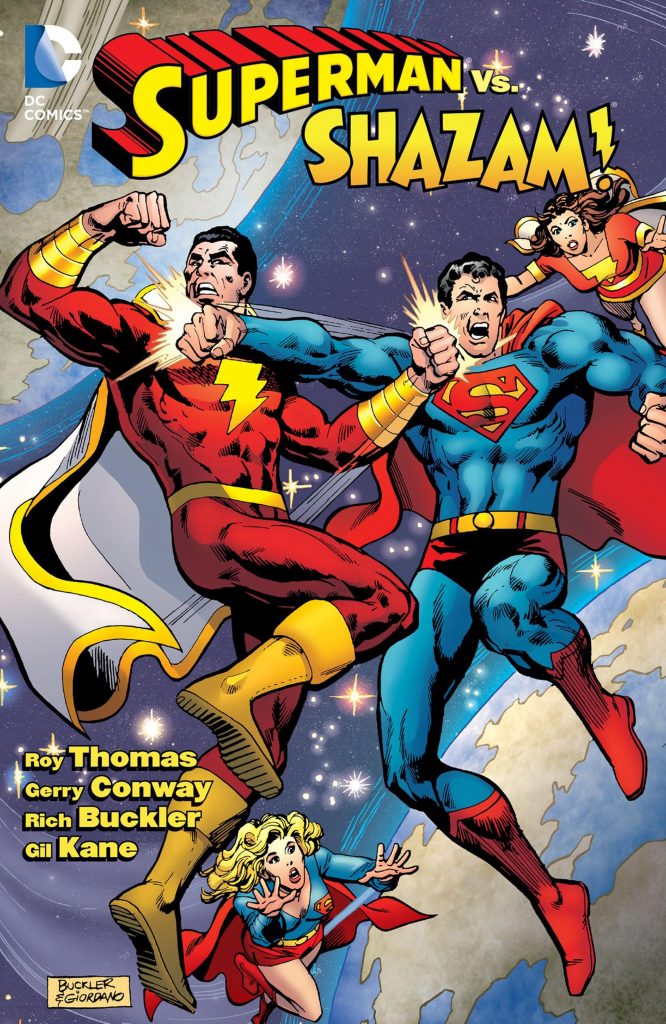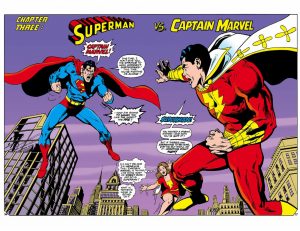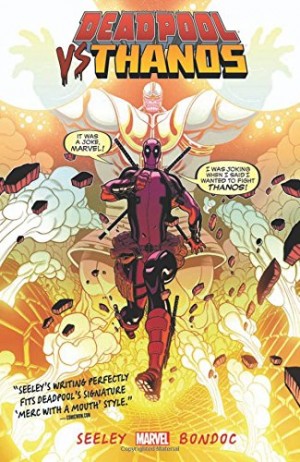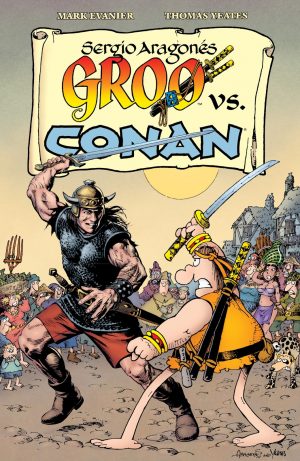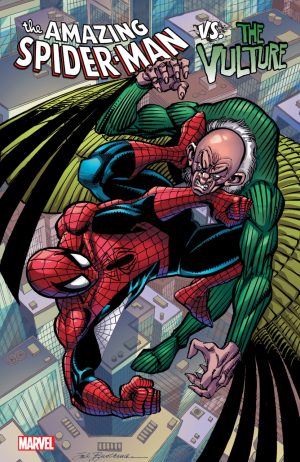Review by Karl Verhoven
Starting in 1978 and finishing in 1984, all these stories predate DC integrating their assorted worlds. In practical terms, this means Superman exists on the ‘real’ DC Earth, while Captain Marvel operates on an alternate world known as Earth-S. And this was also a time when Captain Marvel retained his original 1940s identity, rather than being named Shazam after the magical word that transforms the young Billy Batson into the World’s Mightiest Mortal.
The earliest story was originally published as one of DC’s treasury sized specials, with Gerry Conway and Rich Buckler engineering the meeting between the two very similar heroes. It’s not dated well. The plot depends on the deceit of each believing the other has attacked them, and before that occurs there’s a scene of each performing a selfless heroic act. The wildcard is a new character planning that two Earths collide, the result of which will be an energy release enabling him to rectify a past mistake at a terrible cost. Both creators are in hyper-exaggeration mode, and the sample art is a suitable indicator of tone and quality. Buckler doesn’t deliver the sheer spectacle that should be on offer, and the only real novelty is Mary Marvel and Supergirl figuring out what the men don’t.
Conway’s plot for the second story is more imaginative, and Buckler’s art more subtle. When Clark Kent switches to Superman he’s wearing Captain Marvel’s costume and while still having his strength and being able to fly, other powers he’s come to depend on are missing. The person responsible is introduced relatively quickly, Roy Thomas’ script plays on the similarities and differences between the two heroes, and there are a few surprises in a good-natured tale.
Thomas, Buckler and Paul Kupperberg’s follow-up recreates Captain Marvel on Superman’s Earth. “But upon lighting the brazier you did restore me to spiritual life”, explains the original elderly Shazam, “so that I might create a Captain Marvel on this Earth”. A lot of plot is packed into 25 pages, but little of it will stick in the memory.
There’s a considerable upswing in artistic quality as Gil Kane illustrates the final story, one he co-plotted with Thomas and Julie Schwartz, all of whom left Joey Cavalieri to the scripting. They start with Superman taking on scientific genius Sivana’s mechanical beast, then have Sivana cleverly acquiring powers like those of Captain Marvel, leaving our hero with only the lesser abilities of the legends whose traits usually power him. The plot works well, and Kane’s art gives it the cinematic polish Bucker’s pages lack, applying a far greater imagination to the viewpoints and to what can fit in a panel. Sivana’s bald head atop a muscled green and yellow costumed body is appropriately chilling, and there’s a great page in which Kane supplies personifications of the heroes from whom Captain Marvel draws his abilities, owing more to classic illustration than comics. By some distance this final story is the best of the anthology, and leaving an audience wanting more is always good.
